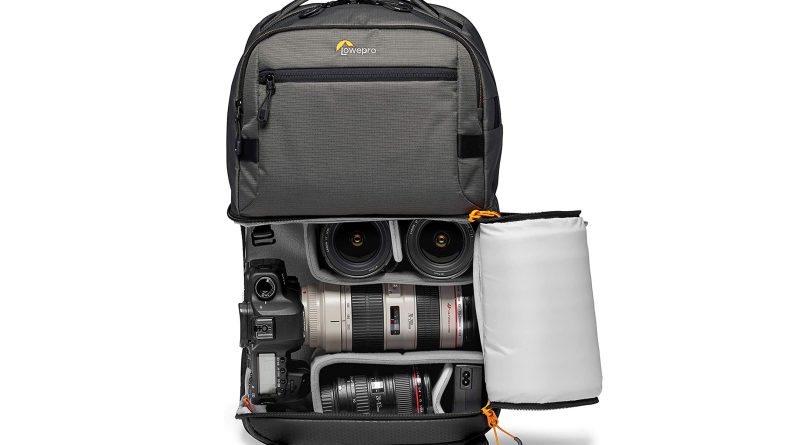
Ready to dive into the captivating world of underwater photography? Before you grab your camera and jump into the depths, there are a few essential safety precautions you need to keep in mind. From equipment checks to proper training, this article will guide you through the necessary steps to ensure a safe and enjoyable experience beneath the waves. So, get your flippers on and let’s explore the world of underwater photography with caution and confidence!
Equipment Safety
Choosing the Right Camera Housing
When it comes to underwater photography, one of the most critical safety precautions you can take is ensuring that you have the right camera housing. The housing is what will protect your camera from the water and potential damage. It is essential to choose a housing that is specifically designed for your camera model. This will ensure that it fits correctly and provides the necessary protection. Additionally, look for features such as durable construction, reliable seals, and easy access to the camera controls. Investing in a high-quality camera housing is essential for the safety of your equipment and the success of your underwater photography endeavors.
Ensuring Proper Maintenance of Equipment
To maintain the safety of your equipment, it is crucial to establish a regular maintenance routine. After each dive, make sure to rinse your camera housing and other gear thoroughly with fresh water. This will help remove any saltwater or debris that could potentially damage your equipment. Pay close attention to the O-rings on your camera housing and other underwater accessories. Clean and lubricate them regularly to maintain a watertight seal. Additionally, store your equipment in a safe and dry environment to prevent any damage that could occur from exposure to moisture or extreme temperatures.
Securing Equipment with Lanyards
When participating in underwater photography, it is important to secure your equipment to your body with lanyards. Lanyards are simple straps or cords that can be attached to your camera, underwater housing, or other accessories, and then fastened to your wrist or diving gear. By using lanyards, you can prevent accidentally dropping or losing your equipment while underwater. Additionally, lanyards can help to reduce the risk of entanglement or damage to marine life. Always ensure that your lanyards are properly attached and secured before diving.
Diving Skills and Knowledge
Obtaining Proper Diving Certification
Before engaging in underwater photography, it is crucial to obtain proper diving certification. Certification courses teach you the necessary skills and knowledge to dive safely, including understanding dive tables, managing buoyancy, and familiarizing yourself with emergency procedures. By becoming a certified diver, you demonstrate your commitment to safety and gain the necessary skills to handle potential risks and challenges that may arise during underwater photography.
Improving Buoyancy Control
Buoyancy control is one of the most important skills for underwater photographers to master. Maintaining neutral buoyancy allows you to hover effortlessly underwater, minimizing the risk of accidentally damaging the fragile marine environment or disturbing marine life. Practice buoyancy control techniques such as using your breathing to adjust your depth and utilizing your fins to maneuver smoothly. Proper buoyancy control will not only enhance the safety of your dives but also improve the quality of your underwater photography.
Mastering Underwater Navigation
Underwater navigation skills play a significant role in ensuring your safety during underwater photography. Knowing how to navigate effectively will prevent becoming disoriented, losing track of your dive buddy, or getting separated from the group. Take the time to familiarize yourself with underwater compasses and navigation techniques, such as natural features, landmarks, and underwater topography. By mastering underwater navigation, you can confidently explore underwater environments and capture stunning images while maintaining your safety.

This image is property of images.pexels.com.
Health and Safety Preparations
Getting a Medical Clearance
Before engaging in underwater photography, it is essential to obtain a medical clearance from a qualified physician. Diving can place unique demands on your body, and it is important to ensure that you are physically fit to dive. Some medical conditions, such as respiratory issues or heart problems, may require additional precautions or restrictions when diving. By obtaining a medical clearance, you can have peace of mind knowing that you are physically prepared and reduce the risk of potential health complications while underwater.
Properly Preparing for Dives
Preparing for dives is a crucial safety precaution for underwater photography. Before each dive, gather all the necessary equipment, such as your camera, housing, diving gear, and safety gear. Check that everything is in proper working order and well-maintained. Plan your dive carefully, taking into consideration factors such as the dive site, depth, currents, and any specific hazards. Inform someone on land about your dive plans, including your estimated time of return. By properly preparing for each dive, you minimize the risk of any unforeseen issues and enhance your overall safety.
Knowing Emergency Procedures
Being familiar with emergency procedures is essential for any diver, including underwater photographers. Learn and practice proper emergency procedures, such as how to respond to equipment malfunctions, buddy separation, or ascending too quickly. Understand the signs and symptoms of common diving emergencies, such as decompression sickness or lung overexpansion injuries. By knowing the correct responses and acting swiftly in case of an emergency, you can effectively manage potential risks and ensure the safety of yourself and others.
Assessing Environmental Conditions
Checking Weather Forecasts
Before heading out for a dive, always check the weather forecasts for the dive site. Inclement weather can pose significant risks, such as strong winds, rough seas, or sudden changes in conditions. Avoid diving in unfavorable weather conditions to ensure your safety. Keep in mind that even if the weather seems calm on the surface, it may not be the case underwater. If you notice any changes in weather during your dive, such as increasing winds or storm clouds, consider aborting the dive and returning to safety.
Evaluating Water Visibility
Water visibility significantly impacts the safety and quality of your underwater photography. Good visibility allows for better composition, focusing, and accurate judgment of distances. Before diving, assess the water visibility by observing the conditions at the surface. Factors such as recent storms, heavy water traffic, or sedimentation can affect visibility. If visibility is poor, consider choosing an alternate dive site or adjusting your dive plan accordingly. Remember that safety should always take precedence over capturing the perfect shot.
Understanding Currents and Tides
Understanding currents and tides is crucial for your safety as an underwater photographer. Strong currents can not only affect your ability to navigate but also increase the risk of exhaustion or being swept away from your intended dive site. Familiarize yourself with the local currents and tidal patterns of the dive location. Consult tide tables and current charts before planning your dives. If you encounter strong currents during a dive, it is important to stay calm, conserve your energy, and follow the appropriate procedures to navigate or seek shelter until it is safe to ascend.

This image is property of images.pexels.com.
Handling Marine Life
Avoiding Touching or Disturbing Marine Life
Respecting and avoiding any direct contact with marine life is fundamental for both ethical and safety reasons. Many marine species are delicate and easily damaged, even by seemingly harmless interactions. Touching or disturbing marine life can stress or injure them, disrupt their behaviors, or even lead to dangerous encounters. As an underwater photographer, prioritize observing marine life from a respectful distance and resist the urge to touch or chase after them. Remember, understanding and preserving the underwater environment is as important as capturing beautiful images.
Respecting Protected Species
Certain marine species are protected under conservation regulations due to their vulnerability or significance. As an underwater photographer, it is crucial to familiarize yourself with the local marine protected areas and species-specific protections. Research and understand the guidelines and limitations for photographing protected species, such as maintaining a safe distance or avoiding nesting or mating areas. By respecting these guidelines, you contribute to the conservation efforts and ensure the well-being and safety of the protected species.
Learning First Aid for Marine Life Injuries
Despite all precautions, accidents can happen, and it is important to be prepared to provide first aid for marine life injuries. Familiarize yourself with common injuries caused by marine life encounters, such as cuts, stings, or bites. Learn how to recognize and treat these injuries, including proper wound care, managing allergic reactions, and applying appropriate first aid measures. Having the knowledge and skills to respond quickly and effectively can minimize further harm and potentially save lives.
Buddy System and Communication
Diving with a Buddy
The buddy system is a fundamental safety practice in diving, and it is equally important for underwater photographers. Always dive with a buddy, as they serve as your safety net and can provide assistance in case of an emergency. Before entering the water, establish a plan with your buddy, including communication signals, emergency procedures, and dive objectives. Maintain close proximity and visual contact with your buddy throughout the dive, continuously monitoring each other’s well-being and readiness to respond if needed.
Establishing Underwater Signals
Clear and effective underwater communication is vital for the safety and success of your dive. Establish and practice standard underwater signals with your dive buddy before each dive. These signals can include basic hand gestures for essential messages like “OK,” “Problem,” or “Ascend.” Additionally, consider investing in underwater communication devices, such as underwater radios or signaling devices, to enhance communication capabilities and improve safety.
Maintaining Good Communication
In addition to establishing underwater signals, maintaining good communication with your dive buddy is crucial. Regularly check in with each other during the dive using agreed-upon hand signals, maintaining eye contact, or using other means of communication devices. Clear and continuous communication ensures that you and your buddy are aware of each other’s conditions, intentions, and potential hazards. By staying connected, you can address any concerns or potential issues promptly and prevent accidents.

This image is property of images.pexels.com.
Emergency Preparedness
Carrying Essential Safety Gear
Being prepared for emergencies is essential when participating in underwater photography. Carry essential safety gear such as a signaling device, a dive knife or shears, a whistle, and a surface marker buoy (SMB). These items can be essential in attracting attention, deterring potential hazards, or signaling for assistance. Ensure that you are familiar with the proper use of each item and have them easily accessible during every dive. Having the right safety gear can make all the difference in a potentially hazardous situation.
Preparing for Equipment Malfunctions
Equipment malfunctions can occur at any time, and it is important to be prepared to handle them. Familiarize yourself with the basic troubleshooting procedures for your camera, housing, and other diving equipment. Practice assembling and disassembling your gear, ensuring you know how to handle any potential issues that may arise. Additionally, always carry spare batteries, O-rings, and other essential parts to quickly address minor equipment troubles. By being prepared and knowledgeable, you can minimize the impact of equipment malfunctions and ensure your safety underwater.
Having a Backup Plan
Even with careful planning, sometimes unforeseen circumstances can arise during underwater photography. It is essential to have a backup plan in case your original dive plan cannot be executed. This could include having alternative dive sites in mind or adjusting the depth and length of the dive based on changing conditions. Communicate with your dive buddy and be flexible in adapting to the situation. Having a backup plan in place ensures that you can still have a safe and enjoyable dive, even if things don’t go exactly as planned.
Managing Depth and Bottom Time
Adhering to Dive Tables or Computer Limits
Adhering to dive tables or computer limits is crucial for managing the depth and bottom time of your dives. Dive tables and dive computers provide guidelines for safe and controlled diving by considering factors such as depth, time, and repetitive dives. Always follow the recommendations, limits, and safety stops outlined by the dive tables or displayed by your dive computer to minimize the risk of decompression sickness or other diving-related injuries. By managing your depth and bottom time responsibly, you ensure the safety of yourself and your fellow divers.
Avoiding Decompression Sickness
Decompression sickness, often referred to as “the bends,” is a potentially dangerous condition that can occur when ascending too quickly after prolonged or deep dives. To avoid decompression sickness, it is essential to follow proper ascent rates, safety stops, and dive profiles recommended by dive tables or computers. Allow sufficient time for off-gassing by ascending at a controlled pace, making safety stops as required, and monitoring your ascent rate. By practicing responsible diving habits, you reduce the risk of decompression sickness and its associated complications.
Properly Ascending and Descending
Ascending and descending properly is an essential safety precaution for underwater photography. When descending, take your time to equalize your ears regularly and adjust your buoyancy to maintain a controlled descent rate. Proper buoyancy control during descent ensures a smooth and safe transition into the water. When ascending, maintain a controlled ascent rate while monitoring your depth and air consumption. Ascend with your dive buddy, follow the recommended safety stops, and be mindful not to exceed the limits set by dive tables or dive computers. By practicing proper ascent and descent techniques, you can minimize the risk of injury or decompression sickness.
Photography Techniques
Practicing Underwater Photography Skills
Developing and honing your underwater photography skills is paramount for both safety and capturing stunning images. Practice using your camera and housing in controlled environments before embarking on more challenging dives. Familiarize yourself with the camera settings and functions, understand the effects of different lenses, and experiment with composition and lighting techniques. By practicing in a controlled environment, you can refine your skills and become more comfortable and confident underwater.
Understanding Natural Lighting
Lighting plays a crucial role in underwater photography. Understanding how different lighting conditions can affect your images is vital for both the aesthetic quality and safety of your dive. Natural lighting, such as sunlight filtering through the water, can create beautiful and dramatic effects. However, be cautious of the potential risks associated with strong or direct sunlight. Excessive exposure to sunlight can not only harm your eyes but also overheat your camera equipment. Make sure to protect yourself, your eyes, and your camera gear from the sun’s direct rays by using proper UV filters, lens shades, and exposure settings.
Avoiding Disturbing Sediments
When capturing images underwater, it is important to be mindful of your surroundings and how your actions may impact the environment. Avoid disturbing sediments or kicking up clouds of sand as this can not only affect the visibility but also harm marine life and their habitats. Fine sediments that are disturbed can settle on corals and other delicate organisms, potentially smothering them. To ensure the safety and preservation of the underwater environment, maintain good buoyancy control and be cautious with your movements, minimizing disturbances while capturing your photographs.
Proper Post-Dive Care
Handling and Cleaning Equipment
After each dive, it is vital to handle and clean your equipment properly. Ensure that you are in a safe and dry area before handling your camera, housing, or other gear to minimize the risk of accidental damage or dropping them. Remove any excess water or debris from your camera housing and equipment using a soft cloth or brush. Pay close attention to the O-rings and other seals, cleaning and lubricating them as necessary. Proper handling and cleaning of your equipment help extend its lifespan and ensure its optimal performance for future dives.
Rinsing Gear with Fresh Water
Rinsing your gear with fresh water after each dive is an essential step in equipment maintenance. Rinse your camera housing, dive gear, and other equipment thoroughly to remove any lingering saltwater, sand, or potential contaminants. Pay attention to hard-to-reach areas and crevices where salt and debris can accumulate. Rinse the gear both outside and inside the camera housing if applicable. By rinsing your gear with fresh water, you prevent the buildup of salt and corrosion, preserving the integrity and performance of your equipment.
Storing Equipment in a Safe Environment
Proper storage of your underwater photography equipment is crucial for its longevity and safety. After rinsing, ensure that your gear is completely dry before storing it. Store your camera housing, camera, and other equipment in a cool, dry, and secure environment, away from direct sunlight, moisture, extreme temperatures, or sharp objects that could potentially damage them. Invest in protective cases, padded bags, or dedicated storage solutions to keep your gear organized and well-protected. By storing your equipment safely, you reduce the risk of damage and ensure its readiness for future dives.
By following these essential safety precautions for underwater photography, you can have a safe and enjoyable experience while capturing stunning images of the underwater world. Remember to prioritize the safety of yourself, your equipment, and the environment while adhering to responsible diving practices and respecting all marine life encounters. Happy and safe diving!

